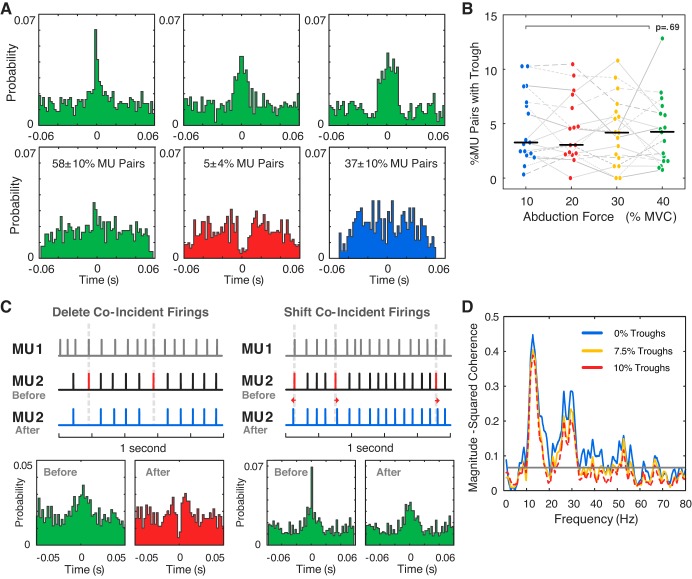Fig. 7.
A: sample cross-correlograms between pairs of motor unit (MU) pulse trains. Across all trials, ~58 ± 10% of MU pairs had a narrow or broad peak (of varying amplitude) centered at approximately zero lag in the cross-correlogram (green), 5 ± 4% had a dip or trough at zero lag (red), and 37 ± 10% showed no distinct peaks or troughs (blue). B: percentage of the MU pairs that exhibited a trough at zero lag in the cross-correlogram at each force level for all subjects (median over all subjects shown in black). C: troughs could be artificially induced in the cross-correlogram for an MU pair by deleting coincident firing times in one MU (MU2) relative to the other reference unit (MU1). A broader, less-distinct peak in the correlogram was observed when firing times were shifted (by 3 ms or less) in MU2 relative to coincident firings in MU1. D: changes in the coherence spectrum after the deletion of coincident firings in selected MUs for a trial in which no troughs were originally detected. Troughs were artificially induced in 1) 7.5% of all MU pairs (2 of 15 MUs indicated for removal) and 2) 10% of all MU pairs (3 of 15 MUs indicated for removal). MVC, maximal voluntary contraction.

